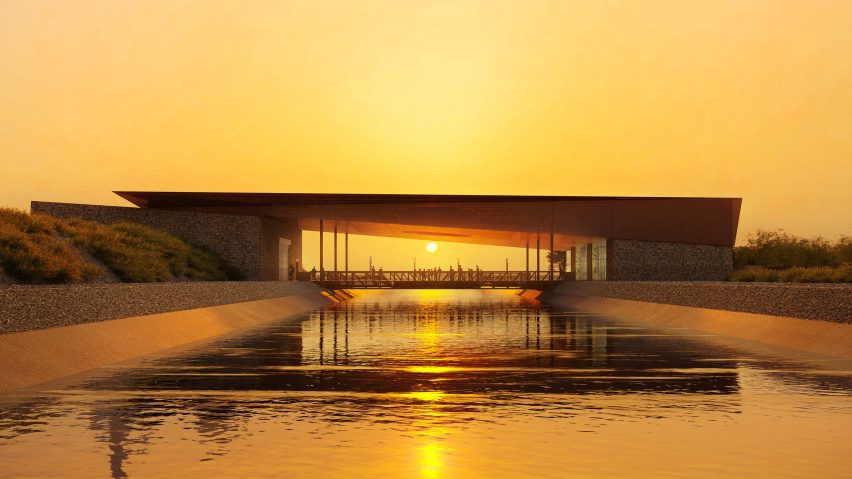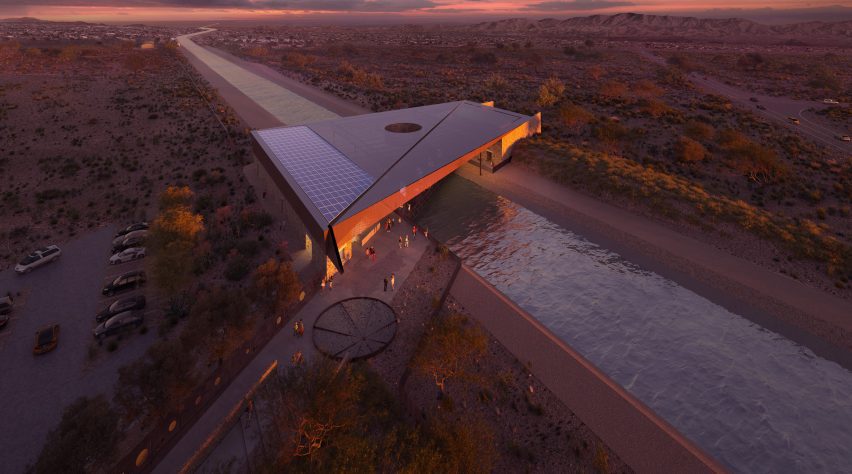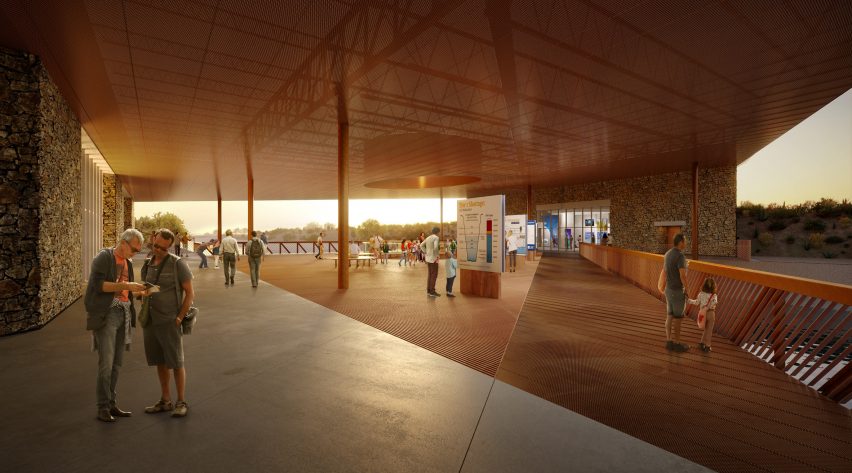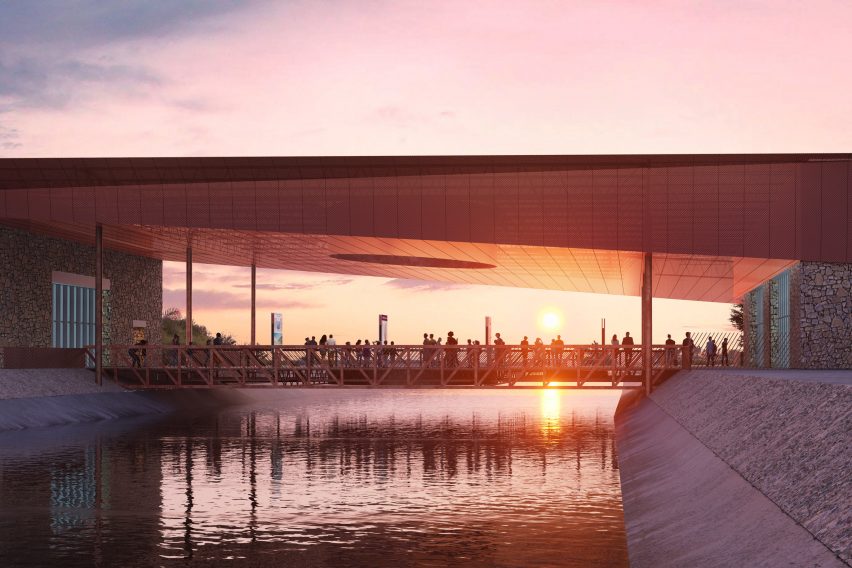
Jones Studio designs education centre to show "preciousness" of water in Arizona
Architecture firm Jones Studio has designed an educational centre in Arizona with the aim of raising awareness about water resources and infrastructure in the region.
The Water Education Center will form part of a Central Arizona Project (CAP) facility north of Phoenix and highlight the "contested topic of water in the west", according to Jones Studio principal Brian Farling.
Prospective designs show a sloping weathering-steel canopy supported by stone-clad buildings on each side of the 336-mile-long (541 kilometers) canal that brings water from the Colorado River to central Arizona.

"A lot of architects are great at dealing with sun and capturing the qualities of light," Farling told Dezeen.
"Less of them deal with engaging and celebrating this precious resource that falls from the sky very, very rarely. Architecture here has a responsibility to remind people of that preciousness."
Farling said that the centre, which includes educational materials and a direct view of the canal, will expose people to the whole water system in order to dispel the disconnectedness he sees in most people from where they get their water.

This education is particularly important now, Farling said, because of the dwindling water supplies in the American Southwest and the political battles over it. He said these stem from water allotments to the Southwestern states from the Colorado River, which are based on century-old agreements.
As part of the proposal, the team has planned exhibitions for the centre that will illustrate the waterways and "engineering marvels" that bring water to the Southwest. These include Hoover Dam and the Phoenix canal system that covers more miles than those in Amsterdam and Venice put together.
A series of cylinders arranged around the canal will also provide physical representations of water usage in the area, such as the amount an average household in the area consumes per year.
According to Jones Studio senior associate Shawn Swisher, the architecture itself aims to show best practices in water conservation.

These practices include the avoidance of fountains or unnecessary grass as well as waste and stormwater retention systems.
On the north side of the canal, a community gathering space placed under the solar panel-covered metal canopy will look out on a preserved desert landscape.
"It will show that architecture can adapt to the site and reinforce everything that the exhibits will try and tell about in more detail the story of water in our region," Swisher told Dezeen.
In general, Farling and Swisher believe that the educational aspects of the centre can lead to the cities in central Arizona being more sustainable.
Swisher pointed to the long history of desert cities and the complex system of canals implemented by the Indigenous people of Arizona as signs that human life can and has been sustainable in the region.
However, the prevalence of concrete and bad drainage, as well as high water usage by agriculture and landscaping typical of post-war American cities needs to be rethought, Swisher added.
He pointed to Las Vegas as a nearby desert city that has a sensible approach to water retention, as it limits water usage and diverts all domestic water used back to the water supply to combat drought.

"This is an opportunity to tell these stories and raise the level of education of everybody," concluded Farling.
"Architecture should contribute to a larger understanding of living in this watershed and dealing with the arid climate and all the great and challenging things that come with it."
The Water Education Center is scheduled to be completed in 2026.
Other structures that were built to promote education in sustainability include an Amsterdam school clad in timber panels by Bureau SLA.